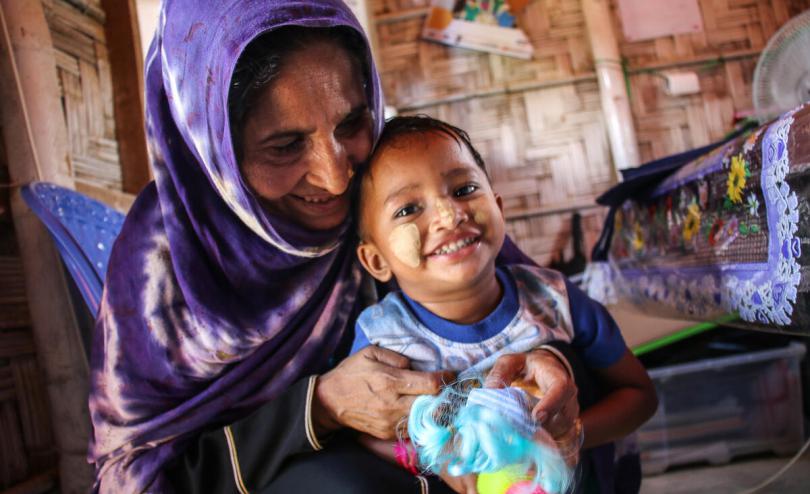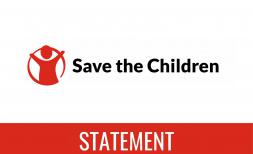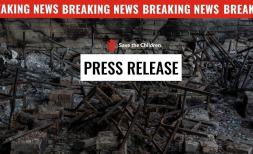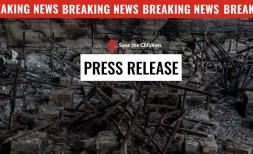BANGLADESH & MYANMAR: More than 100,000 babies born in refugee and displacement camps in recent years

Three-year-old *Runa has only known life as a refugee in Cox’s Bazar, Bangladesh.
An entire generation of children are having their futures robbed, warns Save the Children.
An estimated 108,037 mostly Rohingya children have been born in confinement in Bangladesh and Myanmar over the past several years, new analysis by Save the Children has found. They are living in conditions not suitable for children, with limited access to education and healthcare, no freedom of movement and almost entirely dependent on aid.
To mark three years since more than 700,000 Rohingya fled Myanmar in the wake of brutal violence which the UN has described as a “textbook example of ethnic cleansing”, Save the Children analysed population data from the refugee camps in Bangladesh (since August 2017) and the displacement camps in Myanmar’s Rakhine State (since 2012).
Using UNHCR data from Cox’s Bazar up until 31 May 2020, the children’s aid agency found there are currently an estimated 75,971 children under three years in the refugee camps in Cox’s Bazar – or nine percent of the total refugee population. The implication is almost all of them were born after their mothers fled to Bangladesh.
Three-year-old Runa* came into this world during her mother’s gruelling journey across the Myanmar-Bangladesh border as they fled for their lives. Runa* suffers from chronic undernutrition. “I’m worried about my children’s education, their future, their behaviour,” Runa’s mother Hamida* told Save the Children. “I can’t give them whatever they ask for as we don’t have money. We can’t fulfil their dreams. We can’t love and take care of them properly. That’s why I feel very sad. I can’t provide them with good food. When they ask for anything, I can’t give it to them.”
In Myanmar, displacement camps in central Rakhine have been housing Rohingya Muslims as well as Kaman Muslims since 2012, due to previous waves of ethnic violence. Looking at UNHCR data from Myanmar up to December 2019, Save the Children estimates there are 32,066 children under seven years of age spread across 21 camps, representing over 25 percent of the displaced population.
Khadija* has seven children, two of whom were born after she was forced into a camp for internally displaced people following ethnic violence between the Rohingya and Rakhine communities in 2012. “I have children I need to look after. I need to feed them, send them to school, so I need to manage somehow,” she told Save the Children. “We suffered a lot after we came here. We couldn't eat, sleep or provide medicine to our children. They burned houses and burned some people alive in the market. We didn't expect to escape alive with our children.”
Onno van Manen, Bangladesh Country Director for Save the Children, said:
“Over the past three years more than 75,000 children have been born in the refugee camps of Cox’s Bazar. The birth of a child is a joyous occasion, but these children have drawn the short straw, born into a life where their families can’t work, where they have limited access to education and healthcare, and no freedom of movement.
“We teach our children to dream big, but for a child who knows nothing but a refugee camp, many of their hopes and dreams will seem out of reach. The people and government of Bangladesh welcomed the refugees when they fled violence in their home country, but three years on we are no closer to a sustainable solution to this refugee crisis.
“Rohingya children and families must be able to return to their homes in Myanmar voluntarily and in a safe and dignified manner. World leaders – particularly those with close ties to Myanmar – must do everything they can to encourage a swift resolution to this crisis. We can’t allow the years to pile up and for children to spend their entire childhoods in confinement.”
Mark Pierce, Myanmar, Sri Lanka & Thailand (MST) Director for Save the Children, said:
“More than 30,000 children in the Rakhine camps have known no other life, no opportunity to explore the world outside, or visit their towns and villages.
“No child should be born in a confined camp, separated from other children because they happen to belong to other ethnic or religious communities. We must avoid the harmful consequences of an entire generation of children growing up in enforced segregation, which only further divides communities.
“Nearly three decades after Myanmar ratified the UN Convention on the Rights of the Child and pledged to protect children at all costs, it needs to make good on its promise to guarantee the rights of all children. Long-lasting solutions as laid out by the Rakhine Advisory Committee urgently need to be implemented to ensure freedom of movement, citizenship and other fundamental rights for Rohingya children and their families.”
*name changed to protect identity.
NOTES TO EDITORS:
- Save the Children calculated 108,037 children born in the camps of Cox’s Bazar and Rakhine by using population data from UNHCR. In Bangladesh, the figure of 75,971 children under three was calculated by dividing the population of children aged 1-4 by two and adding that to the population of children aged under one, to arrive at an estimate of children born since August 2017 in Cox’s Bazar, following the brutal escalation of violence in Myanmar which led to 700,000 people fleeing to Cox’s Bazar. In Myanmar, the figure of 32,066 was calculated by dividing the population of children aged 6-11 by six to establish the estimated population of ages 6-7 and adding that to the population of children aged 0-5, to arrive at an estimated population of children born in displacement camps in Myanmar, which were set up in 2012.
- Save the Children works in all 21 displacement camps in northern Rakhine, Myanmar, reaching an estimated 230,000 people with its humanitarian interventions. The aid agency provides support to the community in several ways, through programmes in education, health, nutrition, water and sanitation, cash transfers and child protection services.
- Save the Children has been working in Myanmar since 1995, across nine states in the country. Its programmes in Myanmar include: improving children’s access to health and nutrition; ensuring all children in Myanmar are protected from harm; upholding children’s rights; ensuring every child receives quality education; addressing household poverty.
- Save the Children is one of the leading International aid agencies in Cox’s Bazar, Bangladesh, having reached a total of 853,140 Rohingya refugees and members of the host community, including over 469,430 children, since the escalation of the crisis in August 2017.
- Save the Children has more than 1,300 staff and volunteers supporting its Rohingya Response programmes in child protection, access to education, health and nutrition, water, sanitation and hygiene services, as well as distribution of shelter and food items.
- We have strong multimedia content available. Gulsan* and her grandchildren, Kamal*, 15 and Abdul*, 12; Hamida* and her daughter Runa*, 3 and Munira Bibi* and her son Hakim*, 2.
For media requests and spokespeople, feel free to reach out to:
Shahidul Haque, Shahidul.Haque@savethechildren.org / +880 1713330981
Rik Goverde, Rik.Goverde@savethechildren.org /+44 7732 602 301
Out-of-hours: Media@savethechildren.org.uk / +44 7831 650 409




